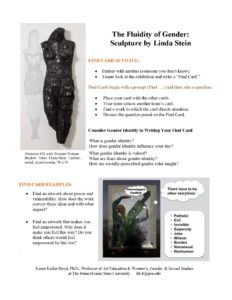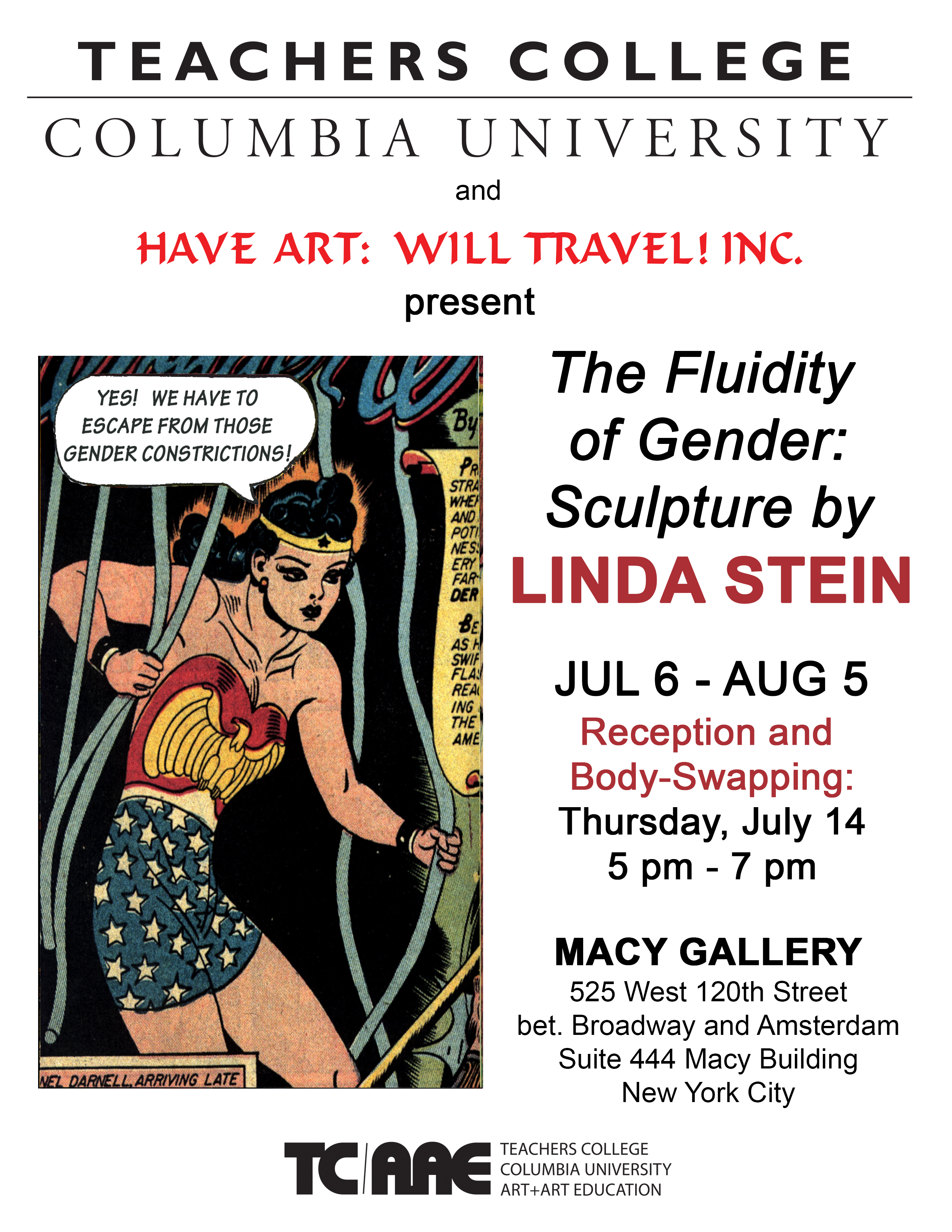The Fluidity of Gender: Sculpture by Linda Stein (FoG)
The FoG exhibition explores the continuum between the binaries of masculinity and femininity, while inspiring the compassion, empathy and bravery it takes to become an upstander rather than a bystander. Have Art Will Travel! (HAWT) asks people to re-invent and visualize bravery for themselves, to look at the armor they wear, the safety they seek. The artist says, “with my androgynous forms, I invite the viewer to seek out diversity in unpredictable ways, to ‘try on’ new personal avatars and self-definitions, knowing that every new experience changes the brain’s structure, and inspires each of us to a more authentic self.”
Click here to see the art in this series.
Click here to see a recording of Linda Stein's webinar about this series.
ENCOUNTERS with FoG
Body
In the Body encounters with The Fluidity of Gender: Sculpture by Linda Stein (FoG), the sculptures are the launch pads to explore vulnerability and protection. One approach is to collaboratively create Body Sculpture Narratives that incorporate sound and light interactivity as well as accompanying voice narratives. This encounter facilitates art creation to explore one’s own experiences of vulnerability and protection. Read more ...
Body Encounter with FoG:
Learn moreIdentity
The Identity encounter with The Fluidity of Gender: Sculpture by Linda Stein begins with a discussion in a circle and asks the participants to write three words that define themselves or how they would like to be known. Follow this prompt with distributing Black Lives Matter ribbons or post-its that they might wear, and ask what matters to them that others should consider for the good of all. What should matter to the society at large? The facilitator then invites participants in the circle to introduce themselves by stating their name, which can be a name that they wish to use for this session based on their values.
Next, the facilitator asks each participant to use a gender identity concept or experience to write a Find Card. Three resources for terminology are linked here: 1 & 2 & 3 global. A Find Card begins with a directive or prompt to find something in an exhibition. The find prompt is followed by a question. Participants visiting the exhibition create the Find Cards rather than the educator. Read more ...
Identity Encounter with FoG:
Learn more



